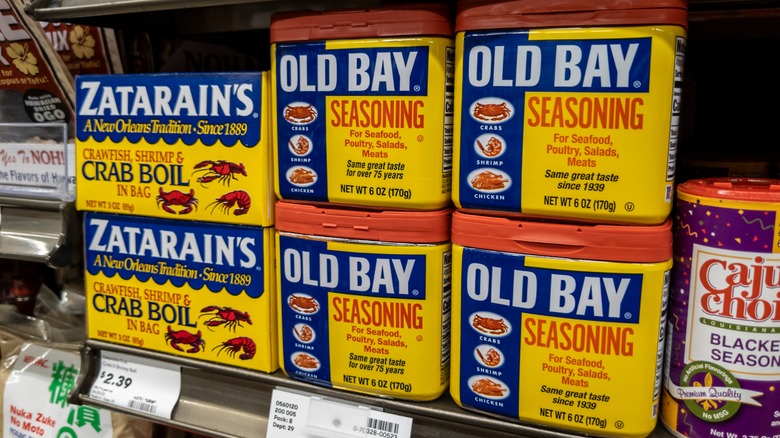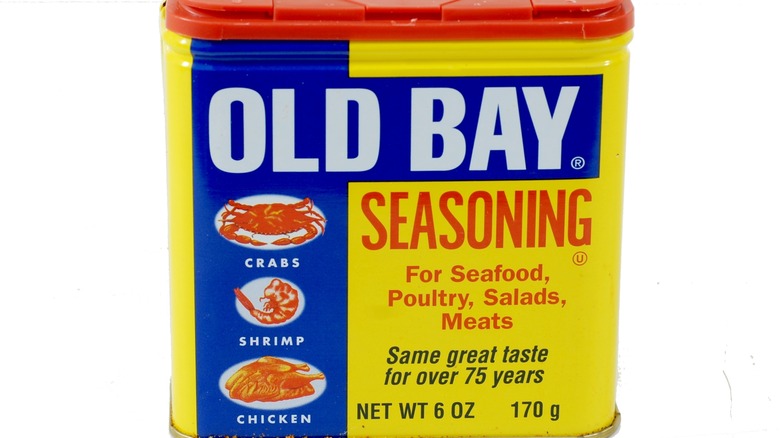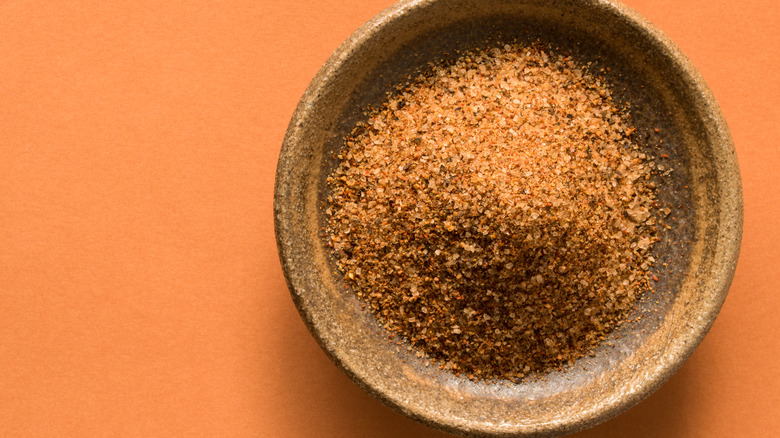Old Bay Vs. Cajun Seasoning: What's The Difference?
In terms of regionally-affiliated flavors, Old Bay and Cajun seasoning are two of the most prominent in the U.S.; while Cajun seasoning is rooted in Louisiana, seafood favorite Old Bay comes from Maryland (via Mashed). Old Bay and Cajun seasoning do have differences, but in many cases they can be used interchangeably. The ingredients in the foundation of each spice make them easy to incorporate into various recipes.
In order to determine whether Old Bay or Cajun seasoning is more appropriate for your dish, you must first understand the variation between the two. According to PepperScale, both are very flavorful and differ in the effect they have on food. While Old Bay has a very specific ingredient list that gives it its powerful flavor, Cajun seasoning can vary greatly between iterations, since there's not one single proprietary blend. As PepperScale points out, Old Bay contains 18 ingredients, while Cajun seasoning often has under ten.
Old Bay is a savory spice blend
First, Old Bay and Cajun seasonings do have a few ingredients in common, which is why they are often mistaken for each other. According to PepperScale, Old Bay's mild seasoning blend includes bay leaves and cloves, with paprika being its most heated element. Old Bay is marketed as a seasoning that works well on seafood, poultry, salads, and meats, though its producer, McCormick & Company, says it also goes well on pizza, pasta, corn, and more.
Greatist recommends using Old Bay for shrimp and crab boils, and incorporating it into Bloody Marys, deviled eggs, popcorn, and even French fries. McCormick points out that the "key flavors" in Old Bay are celery salt, paprika, and mustard seed, and claims that Old Bay's recipe hasn't changed since it was first made in 1939. The product's first name was more cumbersome than "Old Bay," as the spice was originally titled "Delicious Brand Shrimp and Crab Seasoning."
Cajun seasoning delivers more heat
According to the city of New Orleans, Cajun cuisine is a combination of French and Southern cuisines, brought to Louisiana by the French in the 1700s. Hearty Cajun foods introduced during this time included stews, sausages, and jambalaya.
Cajun seasoning blends usually have more significant amounts of red pepper than Old Bay, so the mix is generally spicier (via PepperScale). Gimme Some Oven says that the common ingredients in the savory, earthy seasoning include cayenne, garlic powder, paprika, and oregano. If you don't have a jar of Cajun seasoning at home, don't fret. There are many easy, DIY recipes for spicy Cajun seasoning, like Gimme Some Oven's.
Which seasoning blend should you choose? Cajun seasoning may be your best option if you enjoy a spicy kick of heat in your food. For a more mild, savory flavor, Old Bay could be your cup of tea. Whichever you choose, make sure to grab the napkins — you're in for a mouth-watering treat.


